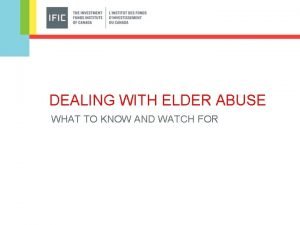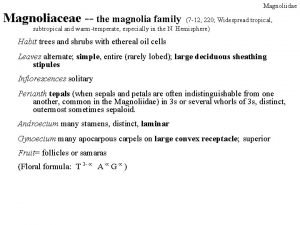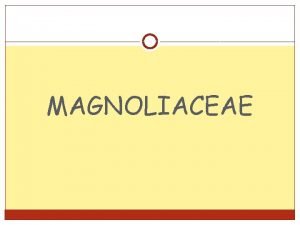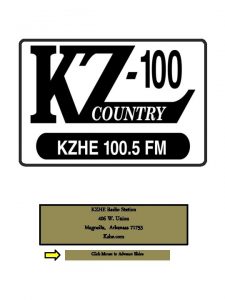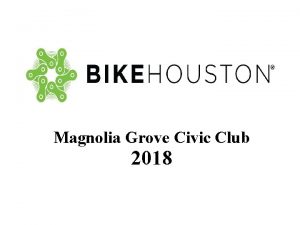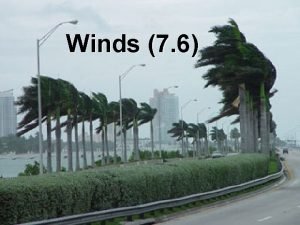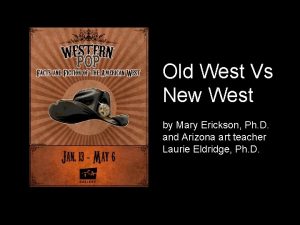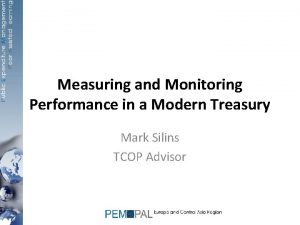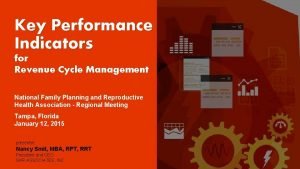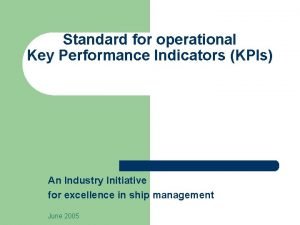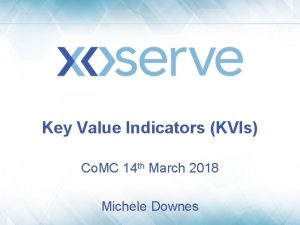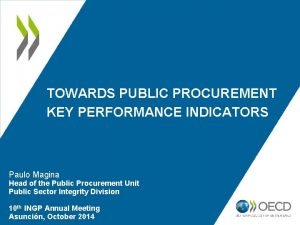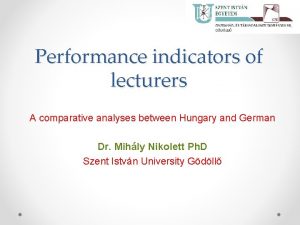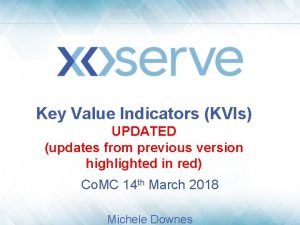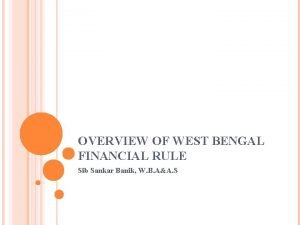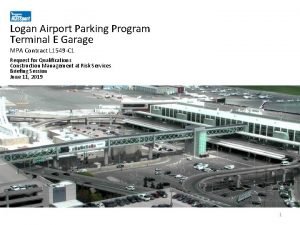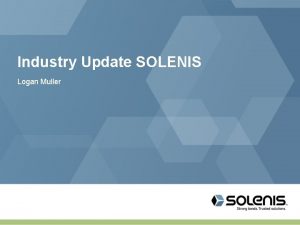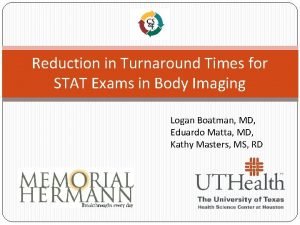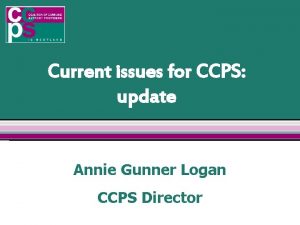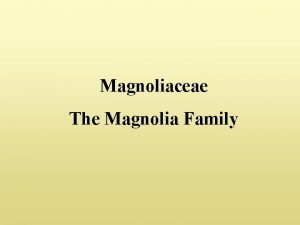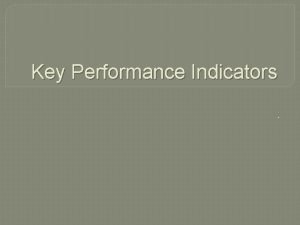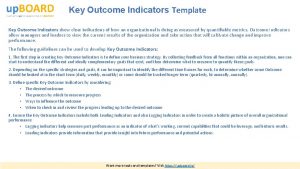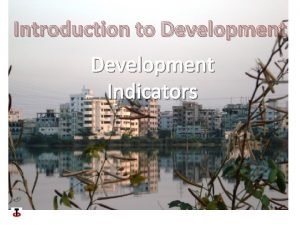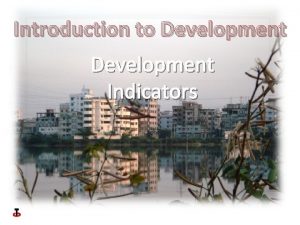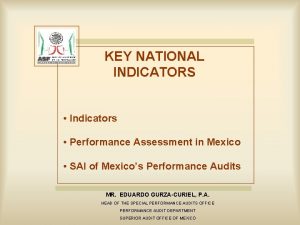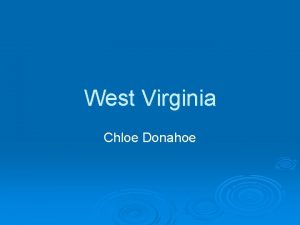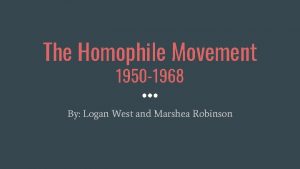Key Financial Indicators Logan Magnolia and West Harrison


















































- Slides: 50


Key Financial Indicators Logan Magnolia and West Harrison School Districts Joint Board Meeting May 9, 2019 © Iowa Association of School Boards

Team IASB Patti Schroeder email pschroeder@ia-sb. org direct (515) 247 -7031 Shawn Snyder email ssnyder@ia-sb. org direct (515) 247 -7054 1 -800 -795 -4272 www. ia-sb. org

Agenda • Review District Key Financial Information • Discuss Current Situation • Whole Grade Sharing Information


Financial Focus Data Booklet has district specific data outlining important trends that impact the district’s financial condition. • Enrollments • Unspent Authorized Budget Ratio • Solvency Ratio • Revenues and Expenditures • Expenditures Per Pupil • Program Funding • Property Taxes • Other Key Data

Key Financial Measures

1. West Harrison – Brief Review of Key Financial Information

West Harrison - General Fund Revenues/Expenditures

Enrollments are Key – Drives the Budget

Served vs. Certified Enrollments

Unspent Authorized Budget (UAB) – #1 Measure

Solvency Ratio

West Harrison - School Tax Rate

Shared Operational Functions (FY 2019) Note that this funding provision is set to expire at the end of FY 2025

2. Logan Magnolia– Brief Review of Key Financial Information

Logan Magnolia - General Fund Revenues/Expenditures

Enrollments are Key – Drives the Budget

Served vs. Certified Enrollments

Unspent Authorized Budget (UAB) - #1 Measure

Solvency Ratio

Logan Magnolia - School Tax Rate

Shared Operational Functions (FY 2019) Note that this funding provision is set to expire at the end of FY 2025

3. Unspent Balance Projections

West Harrison: Projection Assumptions Scenario 1: • Department of Education enrollment projections (FY 2021 – FY 2024) • Weightings that follow the pattern of enrollments • Modified supplemental amounts held at FY 2018 levels (FY 2019 – FY 2024) • 2. 0% SSA state percent of growth rate (FY 2021 – FY 2024) • 2. 06% growth in salary and benefits for FY 2020 and 3. 0% for FY 2021 - 2024) • General 3. 0% growth in other expenditure areas • 2. 0% increase in miscellaneous income (FY 2021 – FY 2024) Scenario 2: • Enrollment decrease of 10 students each year • All others the same as Scenario 1.

Budget Enrollments – Scenario 1

Spending Authority Generated Vs. Expenditures (Scenario 1)

UAB Projections (Scenario 1)

Budget Enrollments – Scenario 2

Spending Authority Generated Vs. Expenditures (Scenario 2)

UAB Projections (Scenario 2)

Logan Magnolia: Projection Assumptions Scenario 1: • Department of Education enrollment projections (FY 2021 – FY 2024) • Weightings that follow the pattern of enrollments • Modified supplemental amounts held at FY 2018 levels (FY 2019 – FY 2024) • 2. 0% SSA state percent of growth rate (FY 2021 – FY 2024) • 3. 0% growth in salary and benefits FY 2020 – FY 2024) and the addition of a principal in FY 2020 • General 3. 0% growth in other expenditure areas • 2. 0% increase in miscellaneous income (FY 2021 – FY 2024) Scenario 2: • Enrollment decrease of 10 students each year • All others the same as Scenario 1.

Budget Enrollments – Scenario 1

Spending Authority Generated Vs. Expenditures (Scenario 1)

UAB Projections (Scenario 1)

Budget Enrollments – Scenario 2

Spending Authority Generated Vs. Expenditures (Scenario 2)

UAB Projections (Scenario 2)

4. Whole Grade Sharing Information

Sharing Provisions Source: Carla Schimelfenig, Iowa Department of Education

Whole Grade Sharing Information The IASB is presenting this for information purposes only. The intent of this section is to discuss the types of whole grade sharing and how that provision works. We are not making any recommendations for either school district regarding whole grade sharing.

Whole Grade Sharing Types: • One-way: One district sends full grade levels to sharing district(s). The sending district no longer operates as a K-12 district • Two-way: One school district sends pupils to one or more other school districts and receives a substantial number of students from at least one of those districts. Note that tuition of students under a whole grade sharing agreement can be negotiated between the districts.

Sharing Arrangements 2018 -19

Sharing Arrangements 2018 -19

Whole Grade Sharing Options • Whole Grade Sharing – receive supplementary weightings to study reorganization • Whole Grade Sharing – no supplementary weightings – tuition negotiated • Whole Grade Sharing – no supplementary weightings – costs based on joint administration of programs • Tuition arrangement - district(s) send out whole grades with a tuition arrangement, but not eligible for supplementary weightings • Not bound to stay in the arrangement forever – can make changes

Whole Grade Sharing – No Supplementary Weighting Districts can also enter into a whole grade sharing arrangement without the intent of reorganization • Whole grade sharing where tuition is negotiated • Whole grade sharing where there’s a jointly administered program • Tuition arrangement – sharing of whole grades

Whole Grade Sharing – Supplementary Weighting Incentive for Districts (Pending Governor’s signature of HF 596): • Requires joint resolution of the affected boards to study reorganization by July 1, 2024 • Supplementary weighting of 0. 1 for students that attends class in another district • Adds additional funds for school districts • Can receive for up to 3 years. However, receipt in years two and three require progress toward a reorganization • If the districts reorganize, they maintain that additional supplementary weighting for the first three years • No penalties for a disbandment of the WGS arrangement

Whole Grade Sharing – Supplementary Weighting Example of Financial Impact: • District A and B agree to a two-way whole grade sharing arrangement • District A sends grades 6 -8 to District B (120 students) District B sends grades 9 -12 to District A (80 students). • District A gets: 120 District B gets: X 0. 1 X $6880 = $82, 560 80 X 0. 1 X $6880 = $55, 040 • And both districts reduce costs

Whole Grade Sharing Resource: Iowa Department of Education Whole Grade Sharing Handbook https: //educateiowa. gov/documents/reorganization-dissolution-sharing/2015/12/2015 -2016 -whole-grade-sharing-handbook Questions?

Vision & Voice for Public Education
 Harrison bergeron picture
Harrison bergeron picture Key risk indicators for vendor management
Key risk indicators for vendor management Key financial indicators
Key financial indicators East is east and west is west
East is east and west is west Indicators of financial abuse
Indicators of financial abuse Magnolu
Magnolu Magnoliidae
Magnoliidae Michelia champaca floral formula
Michelia champaca floral formula Kzhe magnolia arkansas
Kzhe magnolia arkansas Abelia graniflora
Abelia graniflora Scrivere haiku
Scrivere haiku Magnolia hypoleuca
Magnolia hypoleuca Rotting brown magnolia petals
Rotting brown magnolia petals Magnolia grove houston
Magnolia grove houston Magnolia neruda
Magnolia neruda Magnolia bakery prices
Magnolia bakery prices Tulipanowiec fastigiata
Tulipanowiec fastigiata Krenec
Krenec Wind is horizontal movement of air
Wind is horizontal movement of air Name of the wind series
Name of the wind series Noord-zuid-oost-west
Noord-zuid-oost-west Old west vs new west
Old west vs new west Treasury key performance indicators
Treasury key performance indicators Performance indicator template
Performance indicator template Revenue cycle management kpis
Revenue cycle management kpis Abet performance indicators
Abet performance indicators Key performance indicators for capacity building
Key performance indicators for capacity building Key performance indicators for shipping industry
Key performance indicators for shipping industry Key value indicators
Key value indicators Engineering key performance indicators
Engineering key performance indicators Paulo magina
Paulo magina Ipcrf coaching form
Ipcrf coaching form Raquel anido
Raquel anido Key value indicators
Key value indicators Key partners
Key partners Key partners key activities key resources
Key partners key activities key resources West bengal financial rules
West bengal financial rules De bernardy v harding
De bernardy v harding Non financial motivators
Non financial motivators Logan high football
Logan high football Günlük yaşam aktiviteleri modeli
Günlük yaşam aktiviteleri modeli Roper logan tierney yaşam modeli
Roper logan tierney yaşam modeli Logan muller
Logan muller Logan hood
Logan hood Logan terminal e parking
Logan terminal e parking Logan muller
Logan muller Lars didn't recognize patrick logan because
Lars didn't recognize patrick logan because Cassie logan character traits
Cassie logan character traits Logan boatman, md in houston
Logan boatman, md in houston Parental alienation lawyer logan county
Parental alienation lawyer logan county Annie gunner logan
Annie gunner logan




